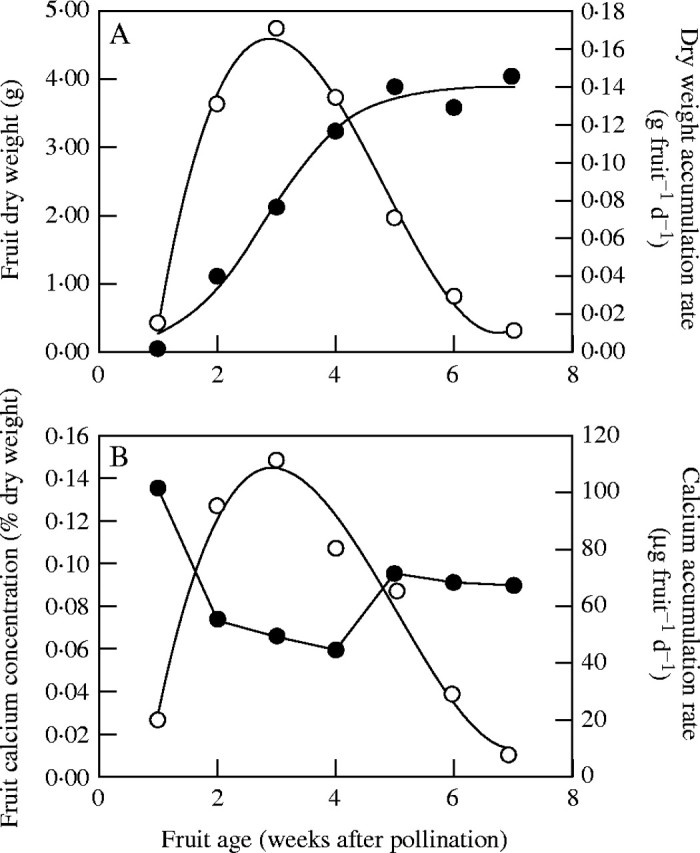Fig. 1.

The time-course of accumulation of dry matter and calcium in a tomato fruit during its development. (A) The accumulation of dry matter (closed circles) follows a sigmoidal relationship with time. Fruit growth rate (open circles) is slow immediately after ovule fertilization during the phase of cell division (Phase 1), accelerates during the phase of cell expansion (Phase 2), and slows again as the fruit approaches its final size (Phase 3). The rate of dry matter accumulation is maximal during the phase of cell expansion. (B) Fruit calcium concentration (closed circles) declines as fruit development proceeds. However, although the rate of Ca accumulation (open circles) is maximal during the phase of cell expansion, the rate of Ca accumulation does not increase as much as the rate of accumulation of dry matter during this phase. Thus, fruit calcium concentration reaches a minimal value during the phase of rapid cell expansion. Data were abstracted from Ehret and Ho (1986a, b) and Ho et al. (1987).
